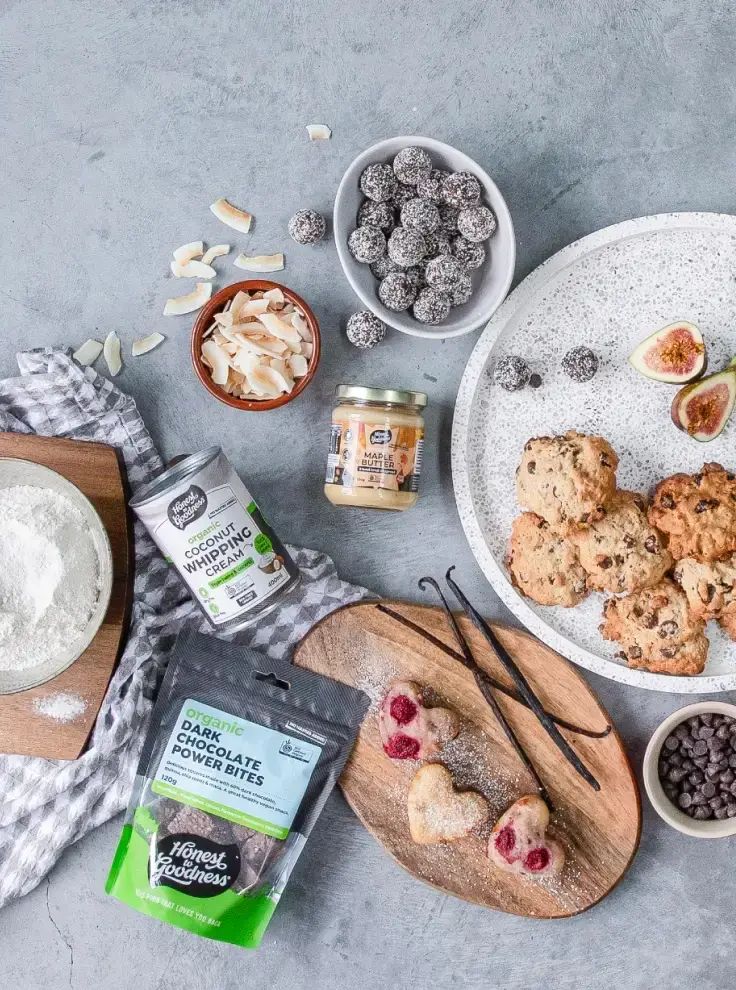Did you know Vanilla is the fruit of an orchid? The vanilla variety comes from the orchid’s name with the two most popular types of vanilla beans in the world being Tahitensis Vanilla and Planifolia Vanilla.
These vanilla bean pods are the Tahitensis kind. Tahitian vanilla pods are more delicate than planifolia and smaller in size. They are slender with a distinctive aroma, described as fruity, floral and sweet spice. They have a strong vanilla flavour with cherry and chocolate notes. They have a shiny and oily skin with seeds inside.
Grade: Premium, Gourmet Quality Grade A
Average bean length: 11-17cm
Average weight per bean: 3.5-5g
Storage: Store in an airtight container, in a cool dry place with low humidity and good ventilation and protect from light.
HOW TO USE
Tahitensis beans are a great choice for a variety of cooking and baking projects, they are perfect in many fruit desserts and ideal in crème desserts such as crème brulee and custards.
You can use the whole bean as is in some recipes, however it is often better to scrape out the seeds so they can easily disperse in what you are making. To do this, place the bean on a flat surface and cut the bean lengthways, open it up and scrape out the seeds that are loaded with flavour. You can also use the pod that is left to make vanilla sugar.
GROWING & PROCESSING
Did you know vanilla beans come from the pod of a tropical climbing orchid? These orchids are most often hand pollinated by dedicated vanilla farmers who tend to their prized crop. It can take 6-9 months from pollination to harvesting the beans, then it takes several more months for the beans to be cured and involves multiple steps, all done by hand!
Once harvested the beans are immersed in hot water to stop them from fermenting. Then they go through a "sunning & sweating" process for 7-28 days where the pods are put out in the sun during the day, then densely stacked together at night to sweat. This process activates the enzymes withing the pods which develop the vanilla flavour and in time turn the pods from green to deep brown. They are then put out in the sun to dry and packed away for several more months to allow the flavour to deepen.
From pollinating to harvesting, together with the lengthy curing process, each stage of vanilla bean production is done by hand making it one of the most labour intensive processes in food production and takes around 12 months, this is why it is so expensive.
You can add a whole vanilla bean to fruit during stewing for an incredible flavour or slit the bean open where you will find lots of tiny sticky seeds that you can blend through yoghurt or ice-cream or use to make a dessert.
INGREDIENTS
Organic Vanilla Tahitensis Pods.






Did you know Vanilla is the fruit of an orchid? The vanilla variety comes from the orchid’s name with the two most popular types of vanilla beans in the world being Tahitensis Vanilla and Planifolia Vanilla.
These vanilla bean pods are the Tahitensis kind. Tahitian vanilla pods are more delicate than planifolia and smaller in size. They are slender with a distinctive aroma, described as fruity, floral and sweet spice. They have a strong vanilla flavour with cherry and chocolate notes. They have a shiny and oily skin with seeds inside.
Grade: Premium, Gourmet Quality Grade A
Average bean length: 11-17cm
Average weight per bean: 3.5-5g
Storage: Store in an airtight container, in a cool dry place with low humidity and good ventilation and protect from light.
HOW TO USE
Tahitensis beans are a great choice for a variety of cooking and baking projects, they are perfect in many fruit desserts and ideal in crème desserts such as crème brulee and custards.
You can use the whole bean as is in some recipes, however it is often better to scrape out the seeds so they can easily disperse in what you are making. To do this, place the bean on a flat surface and cut the bean lengthways, open it up and scrape out the seeds that are loaded with flavour. You can also use the pod that is left to make vanilla sugar.
GROWING & PROCESSING
Did you know vanilla beans come from the pod of a tropical climbing orchid? These orchids are most often hand pollinated by dedicated vanilla farmers who tend to their prized crop. It can take 6-9 months from pollination to harvesting the beans, then it takes several more months for the beans to be cured and involves multiple steps, all done by hand!
Once harvested the beans are immersed in hot water to stop them from fermenting. Then they go through a "sunning & sweating" process for 7-28 days where the pods are put out in the sun during the day, then densely stacked together at night to sweat. This process activates the enzymes withing the pods which develop the vanilla flavour and in time turn the pods from green to deep brown. They are then put out in the sun to dry and packed away for several more months to allow the flavour to deepen.
From pollinating to harvesting, together with the lengthy curing process, each stage of vanilla bean production is done by hand making it one of the most labour intensive processes in food production and takes around 12 months, this is why it is so expensive.
You can add a whole vanilla bean to fruit during stewing for an incredible flavour or slit the bean open where you will find lots of tiny sticky seeds that you can blend through yoghurt or ice-cream or use to make a dessert.
INGREDIENTS
Organic Vanilla Tahitensis Pods.











 Honest to Goodness
Honest to Goodness







